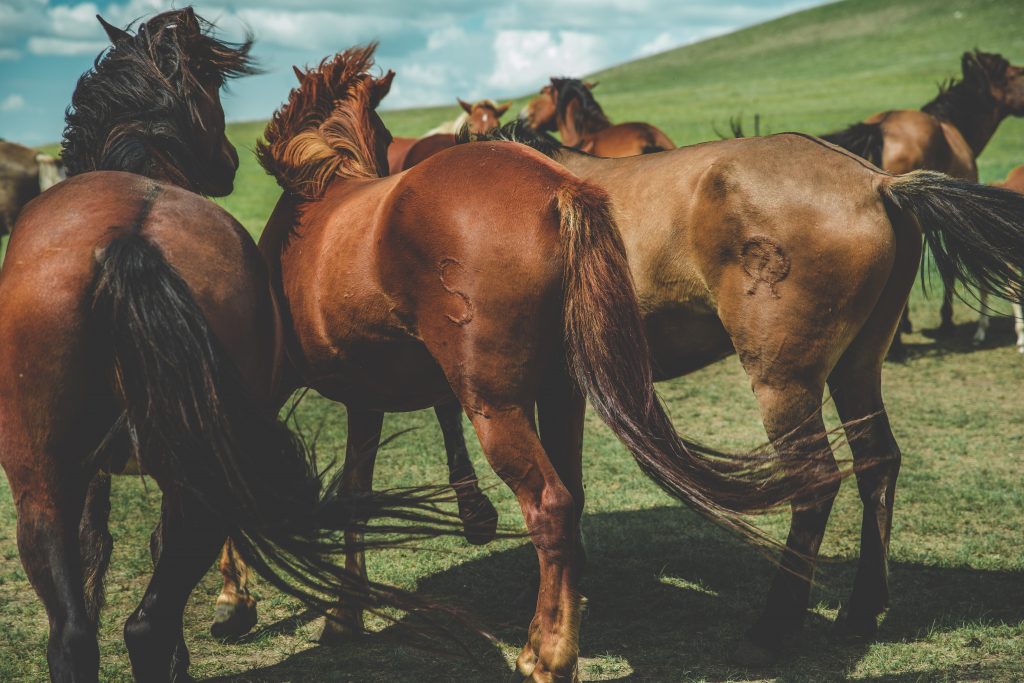We’ve all likely seen our horse butted up to a tree, fence post, or a stall wall, rubbing
away at that tail.
A matted tail dock is also a telltale sign that our horse has been up to its tail rubbing behavior. But why do horses do this? Is he just itchy, or could it be something worse? If you continue to witness the behavior, it’s worth investigating further.
The following are some common causes of tail-rubbing in horses:
Pinworms
This is a common culprit behind tail rubbing. Pinworms occur more frequently in younger horses but can still occur in any aged horse. Female pinworms lay their eggs around the horse’s anus which causes the itching. You cannot see the eggs with the naked eye, but your veterinarian can use clear tape placed over the anal area and then a microscope to check if eggs are present. Deworming with an appropriate anthelmintic will likely take care of the problem.
Insect Hypersensitivity
The most common insect that causes hypersensitivity in horses is the Culicoides gnat. The conditions this causes go by many names including, Summer Eczema, Sweet Itch, Summer Seasonal Recurrent Dermatitis, etc., but it usually occurs in the late spring or summer. The hypersensitivity is caused when a horse reacts to the proteins released in the insect bites, which leads to irritation and often, tail rubbing. Some horses with insect hypersensitivity will also rub their mane, neck, or chest.
Dry Skin
It’s possible that your horse’s tail rubbing is caused by plain old dry, scaly skin. Adding some coconut oil to the area can help if this is the case.
Sunburn
Sunburn is more common in lighter-colored horses such as grays, paints, cremellos, and palominos. Commonly affected areas include the nose, around the eyes, and the tail dock, which, of course, can lead to tail rubbing.
Food Allergy
While not as common as insect hypersensitivity or pinworms, food allergies could be causing your horse to have an itchy tail as well. Alfalfa, wheat, oats, and bran are the most common equine food allergens, but other known allergens include barley, beet pulp, buckwheat, chicory, and clover. A skin allergy test may be needed to find the culprit.
Dirty Sheath or Udder
If you haven’t cleaned your gelding’s sheath in a while, this could be the reason for his tail-rubbing. Since geldings can’t easily rub their sheaths, they will often rub their tail when debris has accumulated in the sheath. Mares may also rub their tails if their udders are dirty.
Behavioral
Although not as common as cribbing or stall weaving, tail-rubbing can also be a behavioral vice resulting from boredom or stall confinement.
No one likes to see their horse rubbing away at their tail, but if it becomes a habit, determining the cause can help you to eliminate the problem.
Love this blog post? We think you will like Five Tips for your Horse’s Immune Health




